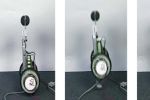Nope, not a typo, 12GB of memory. That's enough to power a small country if it used computer memory
By Matt Buchanan from Gizmodo Australia
Posted 10.03.2020 at 11:38 am
Sure, the new 17-inch MacBook Pros stuff 8 hours of power inside. But whatevers. Asus's G71gx gaming notebook crams in 12 gigabytes of RAM. That's more RAM than most netbooks have for storage.
And, it'll have a Blu-ray option, up to 1TB of storage (via two 500GB drives), and Nvidia's latest mobile GPU, the 1GB GeForce GTX 260M, which delivers a 50 percent performance boost over last gen's 9800M series using the same amount of power, and can be configured in a SLI setup for two graphics cards.
[
Read Full Story ]








